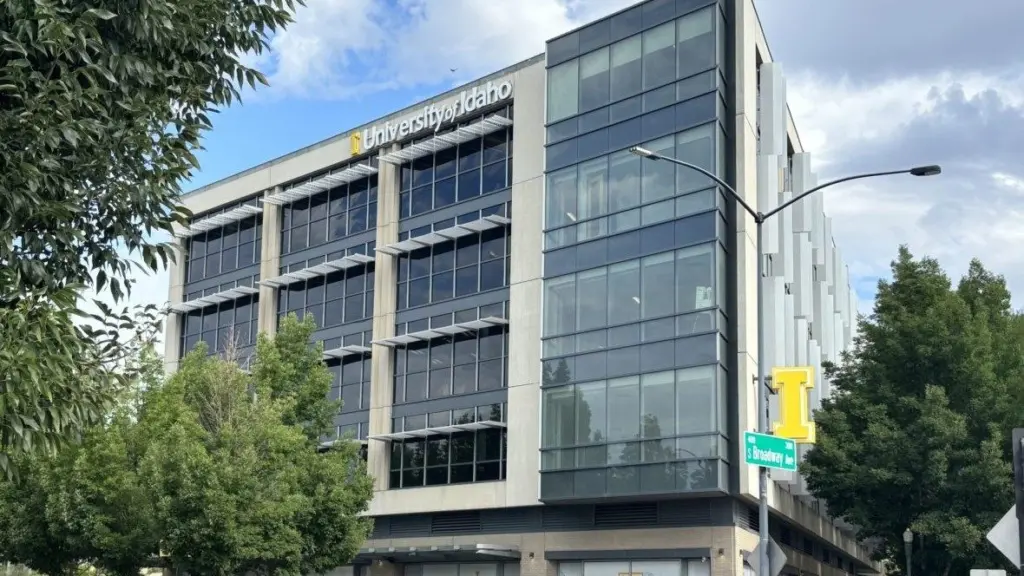Originally posted on IdahoEdNews.org on September 11, 2025
(UPDATED, 3:02 p.m., with a statement from the State Board of Education.)
BOISE, ID – The University of Idaho is making its move in the medical education space race.
The U of I wants to convert 8,200 square feet at its Idaho Water Center in downtown Boise, creating room for a burgeoning medical education partnership with the University of Utah.
Maybe it’s a good use of $8.5 million. Maybe it isn’t. But it is what the Legislature encouraged this winter, with an open-ended law calling for a yet-to-be-determined medical education expansion.
With House Bill 368, lawmakers said what they wanted. They want to fund an additional 30 medical school seats annually — adding 10 seats per year, starting in 2026-27.
They didn’t say where, exactly. But HB 368 calls for an Idaho footprint, with some coursework and clinical placement offered on campuses and hospitals within the state.
Which brings us to the U of I’s plan, hiding in plain sight amid all the other state agency budget requests on the Division of Financial Management’s website. (To save you some scrolling, just open the higher education budget request and turn to page 150.)
Calling HB 368 “a bold turning point in Idaho’s battle against its critical physician shortfall,” the U of I doubles down on the University of Utah, and the downtown Boise location.
“Boise is uniquely positioned for partnership with the University of Utah — the University of Idaho’s prospective new medical education partner — and offers expanded opportunities for clinical education and interprofessional collaboration with healthcare training programs across disciplines with our sister institutions,” according to the proposal, written by the office of the State Board of Education.
Money for the Water Center conversion, and the new classroom space, would come from Idaho’s Permanent Building Fund.
The U of I isn’t exactly walking away from WWAMI, its 53-year partnership with the University of Washington’s medical school. The proposal notes that WWAMI has its Idaho offices in the Water Center, allowing for collaboration between programs. But the State Board’s proposal notes one key concern with WWAMI, which has balked at taking on additional Idaho students, capping enrollment at 40 students per year. “While this is a solid foundation, it has not met the physician workforce needs of the state.”
That tells only part of the story about the embattled partnership with WWAMI, named for its member states of Washington, Wyoming, Alaska, Montana and Idaho. Yes, some lawmakers are sore about the expansion issue. But some lawmakers are just as upset — or maybe even moreso — that the University of Washington dragged its feet before signing a document asserting that it uses no state funds on abortion training.
HB 368 doesn’t necessarily walk away from WWAMI either. In some of its most open-ended wording, the law says the state may cut at least 10 WWAMI seats, starting in 2027-28. “May” does not constitute a mandate. But it underscores a message, the undercurrent of the medical education debate at the Statehouse this year. Idaho’s $7.5 million-a-year affiliation with WWAMI is on life support.
No surprise, then, that the U of I and Idaho State University are looking at the next options, and making no secret of their preferences.
The U of I already signed a memorandum of understanding with the University of Utah in January, looking to build on a $3.1 million-a-year program that takes in 10 Idaho students per year.
During a Sept. 2 state of the university address, U of I President C. Scott Green lauded both WWAMI and the growing relationship with the University of Utah. “We’re currently working hard to bring that partnership to life.”
The U of I deferred comment on the Water Center proposal to the State Board. On Thursday afternoon, board Executive Director Jennifer White said the $8.5 million is a placeholder. The idea is to provide “maximum flexibility” to a state working group that began studying the medical education issue in August.
“An expansion in Boise is one possibility, but the board — informed by the guidance of the working group — will ultimately decide the best path forward to serve Idaho’s urgent needs,” White said in a statement. “By preserving options for the working group, we ensure that higher education will not be an impediment to the progress necessary to address Idaho’s doctor shortage.”
Idaho State, meanwhile, continues to cast its eye on an established partner and a next-door neighbor — the Idaho College of Osteopathic Medicine, a for-profit medical school adjacent to Idaho State’s Meridian campus.
President Robert Wagner says Idaho State is still just exploring an ICOM purchase. But as EdNews first reported in August, Idaho State is sufficiently interested and it has paid a national consultant $100,000 to study the feasibility of an acquisition, and determine a fair-market price. The consultant’s report is expected in October.
ICOM and a University of Utah Boise presence would both seem to check off two boxes from HB 368. Both would train medical students from a state that ranks last in the nation in physicians per capita. Both would ensure that some or all of the training takes place in Idaho, in hopes of convincing medical school students to set up practice in the state.
A state working group — a creation of HB 368 — gets the next word about what to do about WWAMI, the University of Utah and possibly ICOM. The working group’s assignment: Write up a medical education plan by Jan. 2, days before the start of the 2026 legislative session.
The group — which includes representatives from the U of I, Idaho State and ICOM, in addition to medical professionals and two legislators — is taking a systematic look at the problem. On Monday, they spent much of their time talking about graduate medical education, the residencies and fellowships that follow medical school, and go a long way toward determining where a doctor hangs a shingle. It’s an important part of the puzzle.
The task force really has one job, though, and it’s all about the medical schools. Millions of tax dollars are at play — the money a state without a public medical school spends on subsidies elsewhere. And it’s, maybe, a zero-sum game. Idaho’s colleges and universities have already tangled, sometimes publicly, over market share in nursing education; in undergraduate medical education, the stakes could be even higher.
It’s a space race, and the U of I and Idaho State are not just idling on the launch pad.
Kevin Richert writes a weekly analysis on education policy and education politics. Look for his stories each Thursday.





